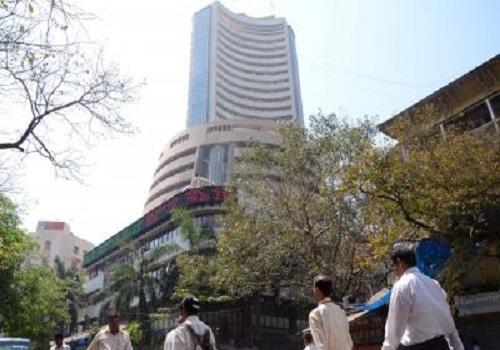
Market Recovery Driven by Positive Global & Domestic Cues: Experts
After three consecutive weeks of losses, the Indian stock market made a strong comeback, closing the week with gains of nearly 2 per cent. The sudden surge in the market was attributed to a combination of positive global and domestic cues, which boosted investors’ confidence and helped stabilise the market.
According to market watchers, a significant factor in the market’s recovery was the improvement in global sentiment following reports of a delay in US tariffs and the possibility of further negotiations. This development led to a stabilisation of financial markets, which in turn had a positive impact on the Indian market.
“The delay in US tariffs and the possibility of further negotiations have helped to ease concerns about a global trade war, which was weighing heavily on the market,” said a leading market expert. “This, coupled with the robust economic growth numbers released recently, has given investors a reason to be optimistic about the market’s prospects.”
The economic growth numbers that the expert referred to were the GDP numbers released by the government, which showed a strong growth rate of 7.2 per cent. This growth rate has helped to boost investor confidence, as it indicates that the Indian economy is on a strong footing.
Another factor that contributed to the market’s recovery was the positive domestic cues. The RBI’s decision to maintain the repo rate unchanged, despite expectations of a rate cut, was seen as a positive sign by investors. The RBI’s decision was driven by concerns about inflation, which is expected to rise in the coming months due to the implementation of the goods and services tax (GST) on various essential commodities.
“The RBI’s decision to maintain the repo rate unchanged was a surprise to many, but it was a positive surprise,” said a leading economist. “The RBI is clearly concerned about inflation, and its decision to keep the repo rate unchanged will help to prevent a surge in borrowing costs.”
The positive domestic cues were also driven by the government’s decision to increase the allocation for infrastructure development in the budget. The increased allocation is expected to boost economic growth, as it will help to create jobs and stimulate demand.
“The increased allocation for infrastructure development is a positive sign for the economy,” said a leading infrastructure expert. “It will help to create jobs, stimulate demand, and boost economic growth, which will have a positive impact on the market.”
The market’s recovery was also driven by the positive sentiment in the auto sector, which has been a major contributor to the market’s growth in recent years. The sector saw a significant surge in demand for vehicles in the quarter ended March 31, 2023, which helped to boost investor confidence.
“The auto sector has been a major contributor to the market’s growth in recent years, and its recent performance has been encouraging,” said a leading auto expert. “The surge in demand for vehicles is a positive sign, and it is expected to continue in the coming months.”
In conclusion, the market’s recovery was driven by a combination of positive global and domestic cues. The improvement in global sentiment following reports of a delay in US tariffs and the possibility of further negotiations helped to stabilise financial markets, while the positive domestic cues, including the government’s decision to maintain the repo rate unchanged and increase the allocation for infrastructure development, boosted investor confidence.
As the market continues to recover, it is expected that investors will maintain a positive approach and continue to invest in the market. The recent surge in the market has given investors a reason to be optimistic about the market’s prospects, and it is expected that the market will continue to grow in the coming months.






